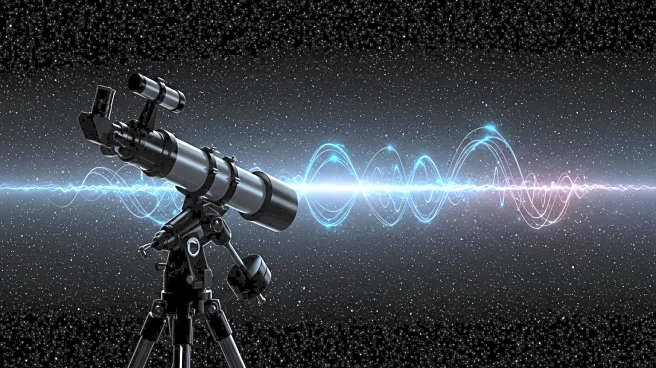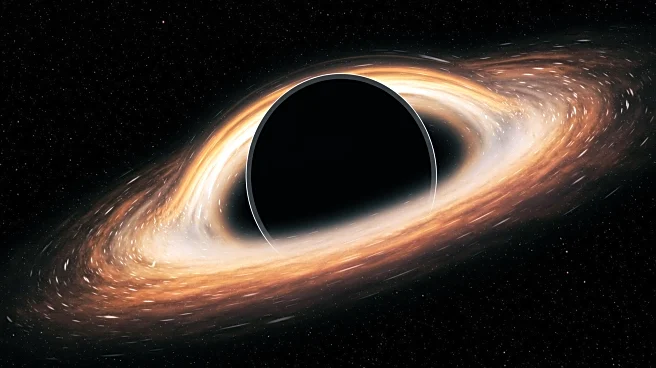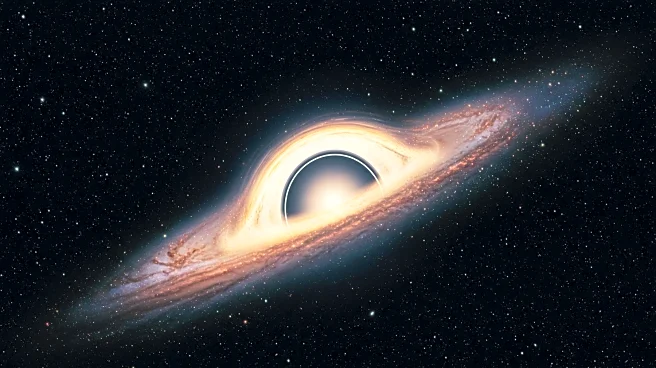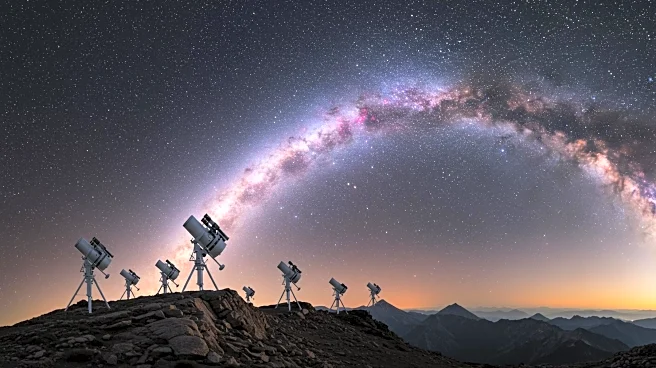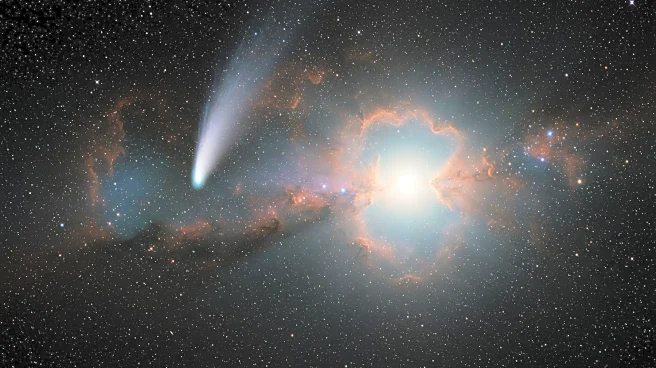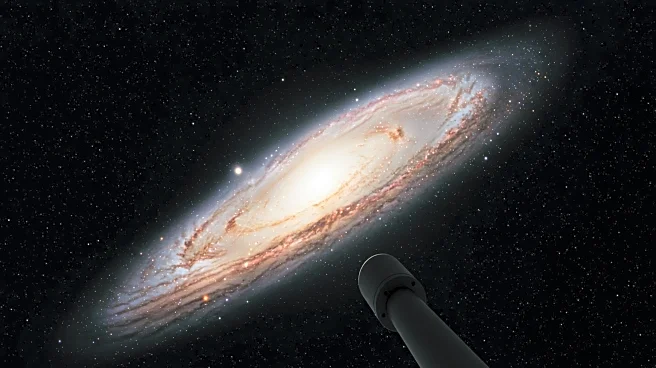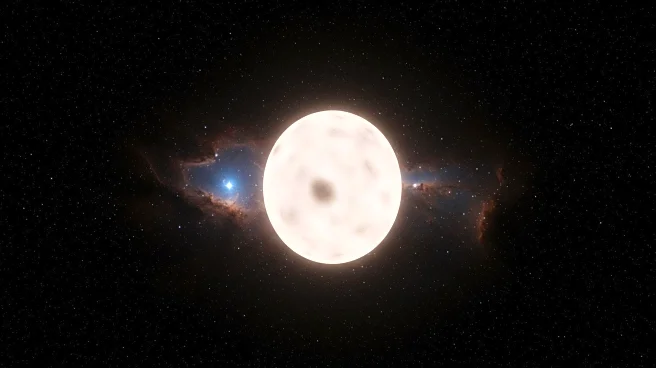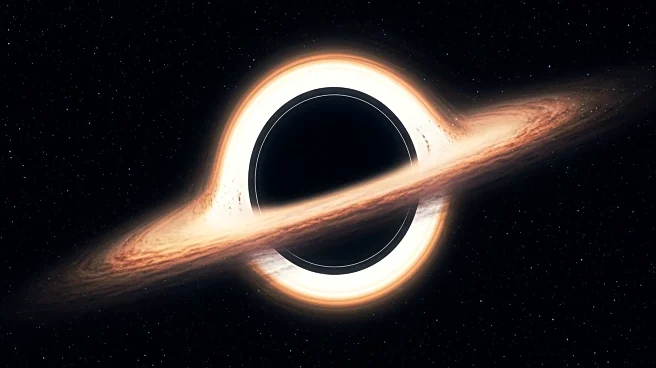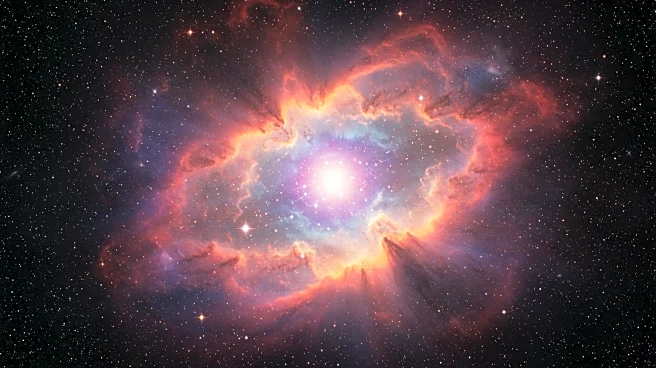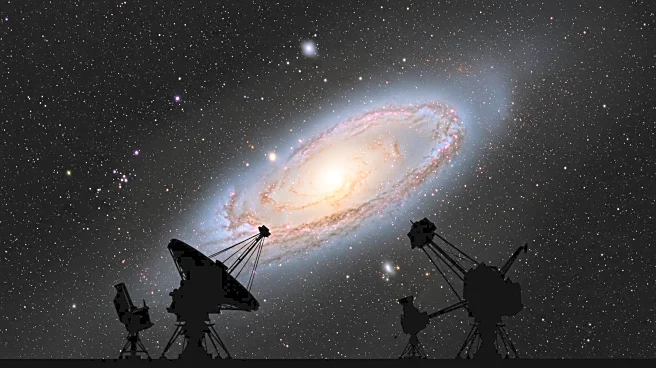What's Happening?
An international team of astronomers, led by Matus Rybak from Leiden University, has discovered millimeter radiation generated close to the core of a supermassive black hole. This finding was made possible through an accidental double zoom effect, combining microlensing and macrolensing, which magnified the galaxy RXJ1131-1231. The team used the ALMA telescope to detect changes in brightness of the galaxy's images, indicating microlensing. This discovery allows astronomers to study phenomena near black holes that are otherwise invisible, providing insights into the corona, a hot, magnetic band around the black hole.
Why It's Important?
The discovery of millimeter radiation near a supermassive black hole is significant as it challenges previous assumptions about the sources of such radiation. Understanding the conditions near black holes is crucial for comprehending the dynamics of galaxies and the universe. This research could lead to advancements in the study of black hole environments, influencing theories on galaxy formation and evolution. The ability to observe these phenomena through microlensing offers a new method for astronomers to explore cosmic structures.
What's Next?
The research team plans to use the Chandra X-ray Telescope to further study the quasar and its surrounding environment. They aim to investigate the temperature and magnetic fields near the black hole, which could provide deeper insights into the physical conditions influencing galaxy dynamics. Continued observations and analysis may refine existing models of black hole behavior and contribute to a broader understanding of cosmic phenomena.
